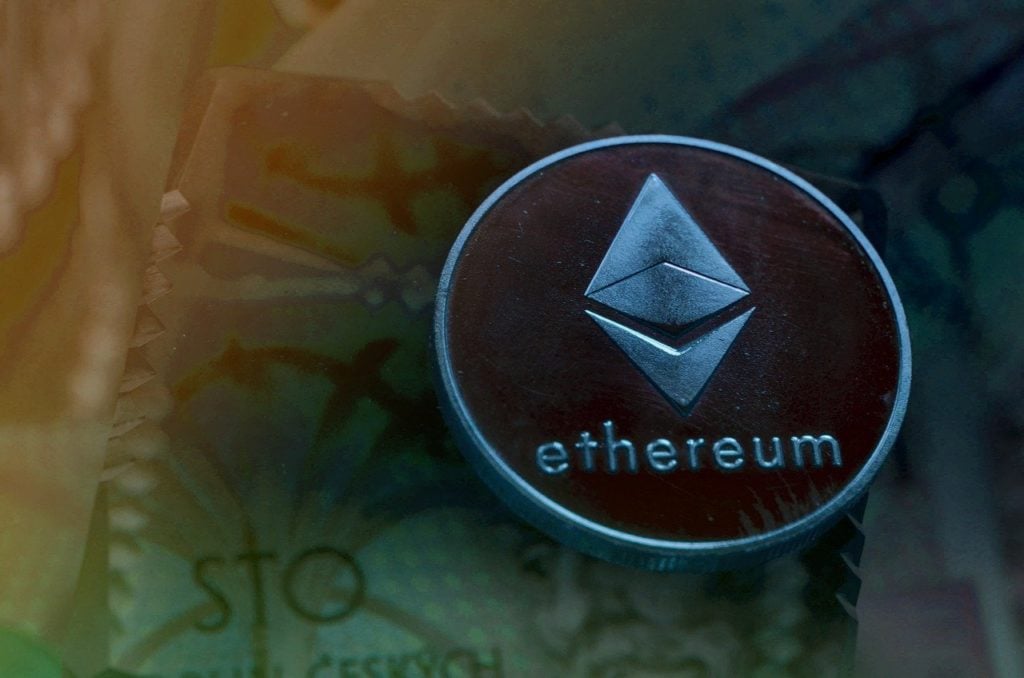The cryptocurrency industry is vast and diverse. There are DeFi tokens, non-fungible tokens (NFTs), Bitcoin, altcoins, and much more. The categories of crypto assets run even deeper than that, branching out more into the likes of security tokens, utility tokens, and others.
This guide focuses on the latter-mentioned tokens of the cryptocurrency industry, comparing the difference between security tokens and utility tokens head to head.
Introduction: The Security Token Vs The Utility Token
To differentiate between security tokens and utility tokens, this guide will begin by first explaining utility tokens, then tokenized securities also called security tokens, then comparing them side by side to allow you to decide which is more appealing and if security tokens and utility tokens make good investments.

What Is A Utility Token?
Cryptocurrencies have become so popular that the utility token definition is now listed in the official Merriam Webster dictionary. A utility token is defined as “a digital token of cryptocurrency that is issued in order to fund development of the cryptocurrency and that can be later used to purchase a good or service offered by the issuer of the cryptocurrency.”
Many utility tokens were launched as initial coin offerings (ICO) to fund the development of the ecosystem that the cryptocurrency token is native to. These products and services are offered in exchange for the utility token, and is designed for use within that ecosystem only. Therefore the utility is tied not only to the digital asset but the network and ecosystem of token holders.
How Do Utility Tokens Work?
Utility tokens are minted with the intention to launch a product or service, in which the token holders can use the token to gain some type of utility or benefit in exchange for the token.
For example, a blockchain developer can build applications where the app economy relies on a native token currency. This application could be a game, software as a service, and much more.
Some Examples of Utility Tokens
Popular examples of utility tokens include Funfair (FUN), Basic Attention Token (BAT), and Covesting (COV).
Funfair (FUN)
FunFair is a crypto token designed to be used within FunFair casino experiences. Unlike Bitcoin casinos that are centralized and just use BTC to bet, FunFair leverages smart contracts on the Ethereum blockchain to introduce a platform for casino games, casinos, and more to get involved.
Basic Attention Token (BAT)
Basic Attention Token is the utility token of the Brave internet browser. Brave is a special internet browser that seeks to disrupt the ad industry by introducing a creator economy. Users of the Brave browser can pay content creators in BAT to support them.
Covesting (COV)
Covesting is the native crypto token to the Covesting copy trading module. The COV utility token is designed to unlock a variety of benefits for followers and strategy managers within the peer-to-peer trading community. Benefits include increasing follower counts, reducing trading fees, and much more.
Benefits of Utility Tokens
Utility tokens provide several key benefits both for developers and for token holders. Developers are able to launch projects with great ambition based on early investor funds. These early investors believe in the value that the token will provide long term.
Token holders benefit as the ecosystem the developer builds and the community around it grows. The more activity, the more the utility token is utilized and the more valuable it becomes. With the right tokenomics, the results can be impressive.
Utility Token Issues
The problem is that some developers don’t adhere to strict tokenomic standards, or leveraged blockchain technology and ICOs to raise funds for projects that never were intended to launch.
Utility tokens got a bad reputation due to the association with ICOs and scams, but they are not all the same. A genuine utility token provides a strong value proposition to token holders and non token holders alike.

What Is A Security Token?
A security token, not to be confused with a safety token, is another type of cryptocurrency asset. Unlike the name would imply, this category of crypto coins has nothing to do with coin security.
Security tokens also can be associated with negativity in addition to being positive for investors. For example, in the Ripple court case, the company argues their XRP token is not a security token. If deemed a security token, Ripple will be guilty of issuing unregistered securities under US regulations.
How Do Security Tokens Work?
Security tokens are sold to investors in a similar fundraising phase called security token offerings or STOs. STOs allow investors to legally invest in these types of tokenized securities.
Tokenized securities represent shares of other assets like equities, but are stored on the blockchain and transactions are recorded on the distributed ledger technology.
Utility tokens that don’t actually offer value risk being deemed an unregistered security token that didn’t follow proper regulatory practices. Investors are urged to learn about The Howey Test to look out for the pitfalls of common investing schemes.
Main Types of Security Tokens
There are several different types of security tokens, however, the main types are equity tokens, debt tokens, and real asset tokens.
Equity Tokens
Equity tokens are stock shares that are stored and tracked on the blockchain. These represent the same company stock shares on the stock market but packaged for the digital age.
Debt Tokens
Debt tokens represent all kinds of debt assets, such as real estate mortgages and corporate bonds. These also incorporate the same underlying risk factors and a built in dividend model. Dividends are distributed directly to a crypto wallet.
Real Asset Tokens
Real asset tokens represent as the name suggests, a real world asset that ownership is being tracked via the blockchain. These assets include energy, metals, livestock, commodities, and more.
Benefits of Security Tokens
Security tokens combine all the benefits of traditional investments like real estate, stocks, and more, but with blockchain technology for easier transfer of ownership, visibility of ownership rights, transparency into distribution, and much more.
Vulnerabilities of Security Tokens
Most of the challenges that surround security tokens are due to all of the regulatory red tape. By being deemed a security token, there is a laundry list of requirements regulators have to comply. Compliance ensures investor protections, but can also hinder speed, function, and innovation.
Security Tokens Vs. Utility Tokens
There are several similarities between these two types of digital tokens, however, there are more key differences that matter for investors to pay attention to.
Here is an easy to use chart to understand the differences and similarities between each type of coin:
| Security Tokens | Utility Tokens | |
| Are the result of fundraising? | Yes | Yes |
| Are they heavily regulated? | Yes | No |
| Provide access to a product or service? | No | Yes |
| Are they tied to a crypto ecosystem? | No | Yes |
| Ownership is tracked via blockchain? | Yes | Yes |
Are Utility Tokens A Good Investment?
What makes a good investment is subjective. At this point, you now understand what the two token types are at a basic level, and can make an informed decision for yourself what type of tokens you would prefer to invest in.
Remember, the best utility tokens are tied to active developers and a live product or service that has actual benefits for token holders and users of the platform.

Summary: The Differences Between Security Tokens and Utility Tokens
The differences between the two types of crypto tokens are more remarkable than the similarities. Security tokens are going to be more common moving forward compared to utility tokens due to the regulatory red tape around innovation.
With ICOs gone, STOs will take over and security tokens will dominate. But you can still invest in utility tokens already launched on the market today. For example, you can buy utility tokens like COV from Uniswap or Kucoin.
New utility tokens won’t follow what is already in use today. A great example of a thriving ecosystem that uses a utility token at its core, is the Covesting copy trading module on Flurex Option.
The award winning margin trading platform is home to the Covesting copy trading module where followers can copy the trades of strategy managers who show their skills via the global leaderboard system.
The COV token unlocks a wealth of features, starting with three different membership levels unlocked by staking COV tokens. Each level unlocks account level utilities such as trading fee discounts, an increase in follower limits, and much more.
What Is A Utility Token?
A utility token is a crypto asset designed to underpin a blockchain ecosystem, economy, or application, in which token holders can exchange the token for products, services, or other utility benefits.
What Are Utility Token Examples?
Examples of utility tokens include Funfair (FUN), Basic Attention Token (BAT), and Covesting (COV). However, many more utility tokens exist.
Are Utility Tokens Valuable?
Utility tokens can be incredibly valuable but only if the developers that created the coin create a sustainable, active community in which the crypto asset has a reason to exist and thrive.
Is Bitcoin A Utility Token?
Bitcoin is the first ever cryptocurrency and had no initial coin offering or early fundraising round. There is also no company involved with Bitcoin and it doesn’t represent tokenized securities like equities, bonds, or real estate.
Is Ethereum A Utility Token?
Ethereum is a layer one foundational blockchain platform for smart contracts. It is not a utility token
Is Ripple A Security Token?
This is up for fierce debate currently. The SEC asserts that the XRP token sold by Ripple is a security token. This suggests that Ripple sold unregistered securities to investors, and could get them in a ton of hot water. If they win the case, however, XRP would be deemed not a security.


